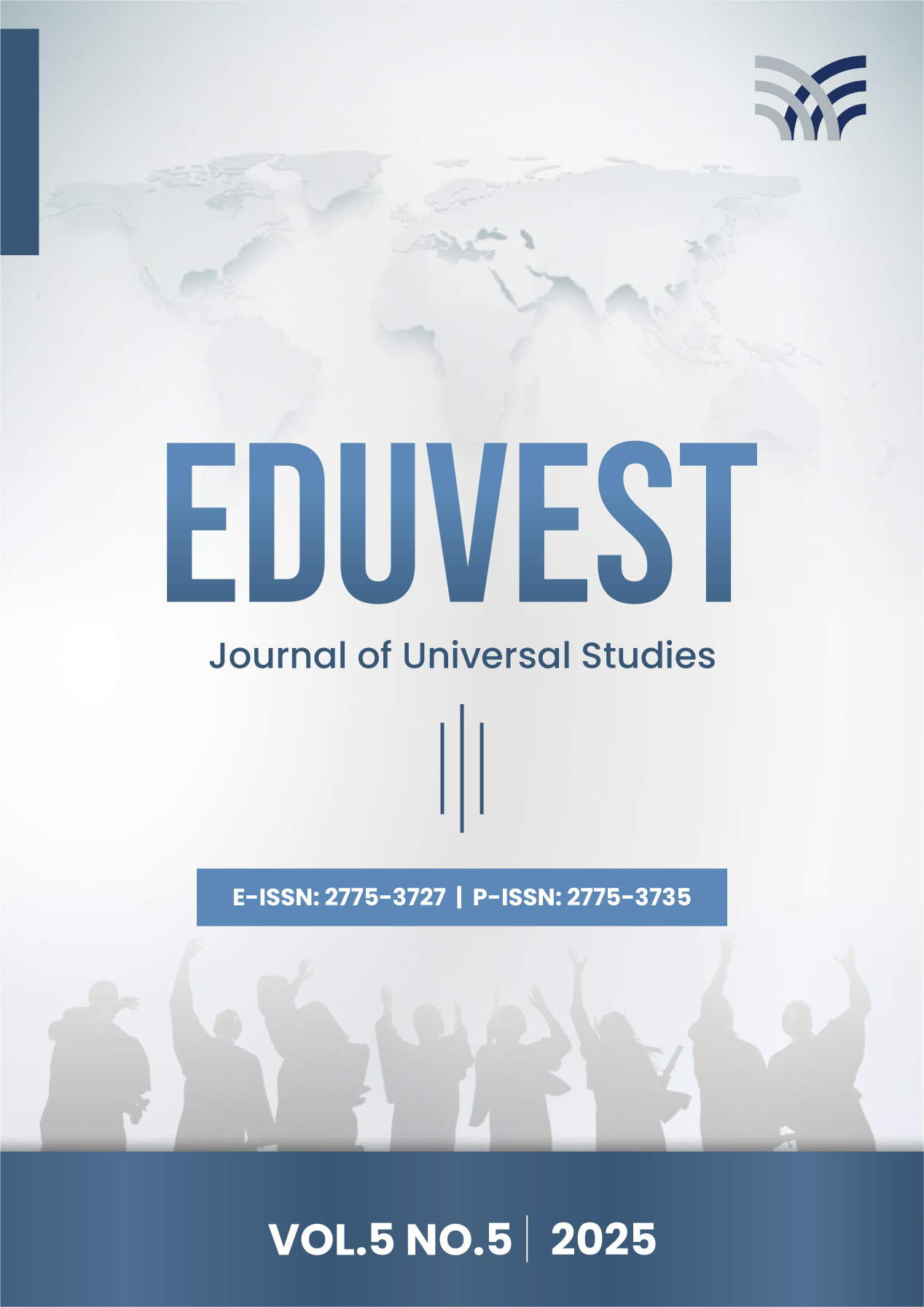Interaction of Oral Microbiota and Type 1 Diabetes Mellitus in Children: A Narrative Review
DOI:
https://doi.org/10.59188/eduvest.v5i5.51180Keywords:
DM T1, microbiota, oral, disbiosisAbstract
Type 1 diabetes mellitus (DM T1) is a chronic autoimmune disease that is common in children and adolescents, characterized by damage to cells β pancreas that leads to absolute insulin deficiency. This condition contributes to metabolic disorders, immune dysfunction, and an imbalance of the body's microbiota, including the oral microbiota. The oral cavity as one of the important microbiota ecosystems, plays a central role in maintaining local and systemic health. In children with T1 DM, oral dysbiosis is often found and is associated with an increased risk of periodontal disease and caries. This literature review aims to understand the interaction between oral microbiota and T1 DM in children, by highlighting changes in microbiota composition, their impact on oral and systemic health, and the potential for microbiota-based therapeutic interventions. Discussion. Commensal microbes in the oral cavity play a role in maintaining the homeostasis of the oral environment. However, in the DM T1 condition, there is an increase in pathogenic bacteria such as Porphyromonas gingivalis, Prevotella intermedia (P. Intermedia) and Fusobacterium nucleatum that trigger periodontal inflammation and the release of pro-inflammatory cytokines (IL-1β, TNF-α, IL-6). This can worsen the regulation of glucose metabolism and increase susceptibility to infection. An overview of clinical manifestations due to dysbiosis that occur in the form of gingivitis, periodontitis, xerostomia, oral candidiasis, and delayed wound healing. Conclusions, The reciprocal interactions between the oral microbiota and T1 DM reflect the complex relationship between dysbiosis, inflammation, and immune dysregulation.
Downloads
Published
How to Cite
Issue
Section
License
Copyright (c) 2025 Eri Dian Maharsi, Pratiwi Pudjilestari Sudarmono, Diniwati Mukhtar, Fadilah Fadilah

This work is licensed under a Creative Commons Attribution-ShareAlike 4.0 International License.











